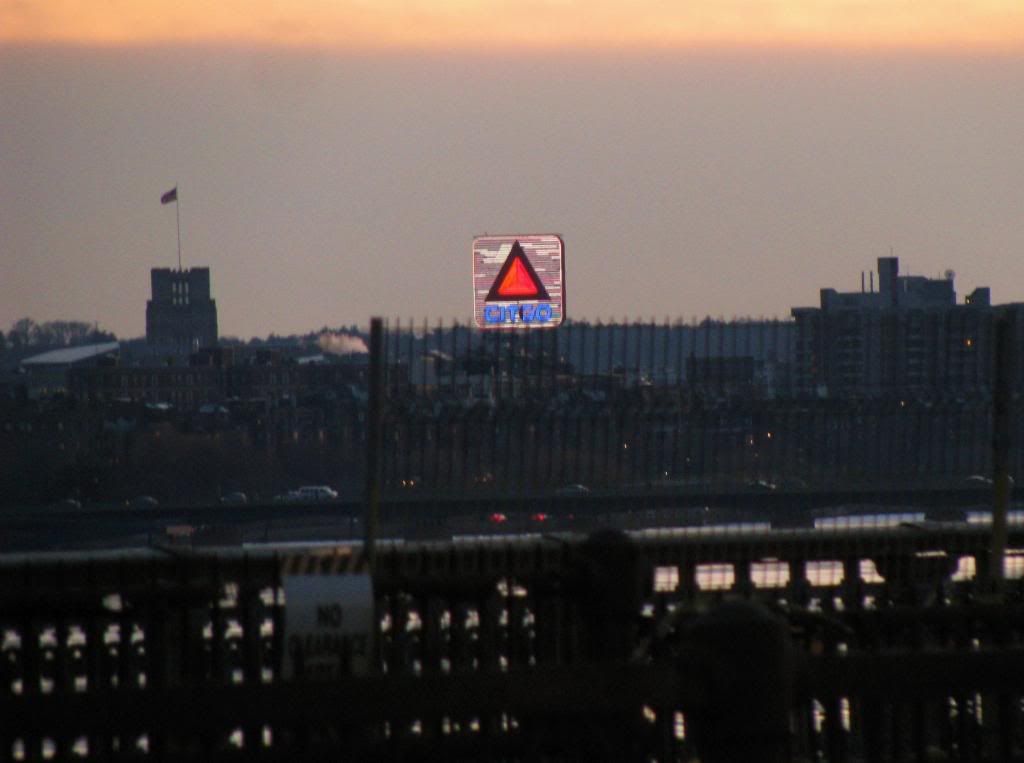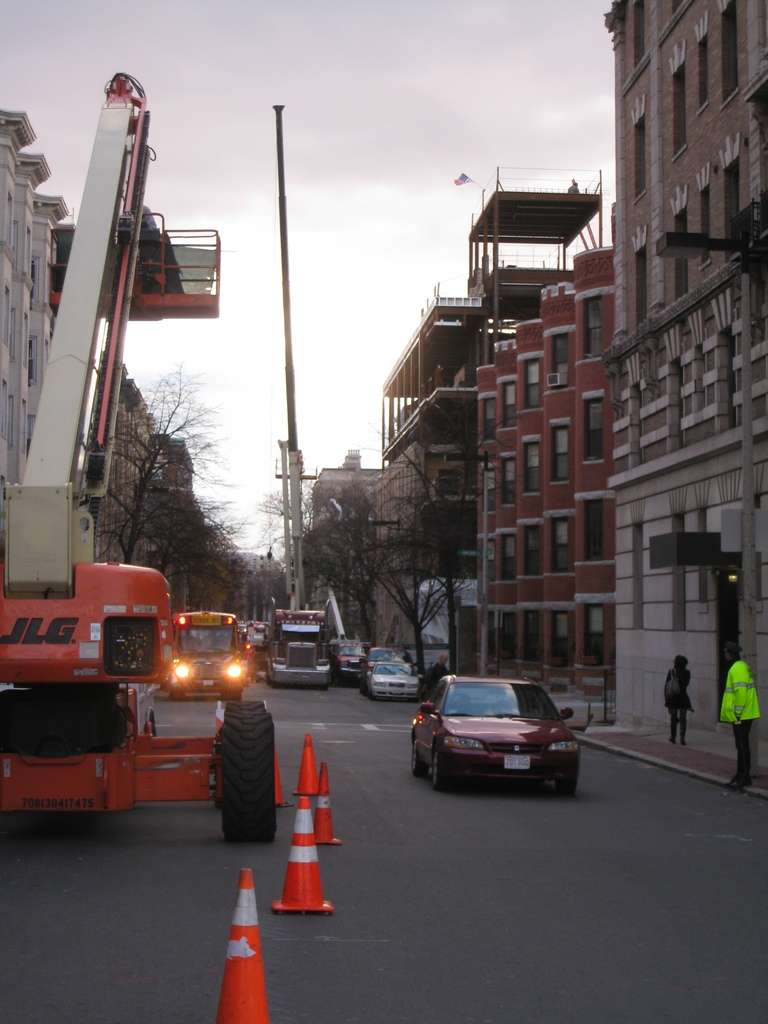You are using an out of date browser. It may not display this or other websites correctly.
You should upgrade or use an alternative browser.
You should upgrade or use an alternative browser.
Fenway Infill and Small Developments
- Thread starter statler
- Start date
The bookstore has paper in the windows -- is it closing or not yet open?
T-Mobile really needs to be replaced by something useful.
Are the metal rail fences for restaurant outdoor seating areas?
? ... the bookstore moved months ago, and the old one (shown) is being renovated by Boloco.
What do you have against T-Mobile serving a community? As I understand it, it's a franchised small business leasing the space from a local business magnate.
The problem is the damn sign blocking the sidewalk.
But it's not blocking the sidewalk, it's on private property. ??
kz1000ps
Senior Member
- Joined
- May 28, 2006
- Messages
- 8,975
- Reaction score
- 11,754
Yeah, the only public part of this whole mess is the narrow sidewalk strip right up against the curb, while all the newly-made plazas and whatnot are private property. This stems from the original 16-foot setback required across the entire Back Bay.
Shepard
Senior Member
- Joined
- Mar 20, 2009
- Messages
- 3,518
- Reaction score
- 68
Did the T-Mobile store somehow opt out of this? It's the only storefront that has no "plaza" in front of it, rather just an elongated slope.
Also, a coffee shop called "Pavement" is opening on that strip soon... wonder where they got the inspiration for their name?
EDIT: found the info about T-mobile from the following article which is so hilarious it needs to be quoted in full:
Of course, this Lyons fellow was extremely wise... the T Mobile store is the most inviting and accessible of them all.
Also, a coffee shop called "Pavement" is opening on that strip soon... wonder where they got the inspiration for their name?
EDIT: found the info about T-mobile from the following article which is so hilarious it needs to be quoted in full:
How Dream Became Reality on Boylston Street10:22 AM Posted by Stephen Brophy
Architect's view of the future
Boylston Street. Image provided
by Berklee College of Music

BY STEPHEN BROPHY
When Mike Ross, our district City Councilor, approached property owners on the stretch of Boylston St. between Mass. Ave. and Hemenway St. about doing something to upgrade the ugly sidewalk in front of their buildings, he got a lot of ?been there, done that.? One owner told him that talk about fixing the eyesore had gone back more than 30 years, and nothing had ever happened. But Ross had a couple of persistent supporters in Walter Hunt, a nearby resident who has worked for community improvement for years, and David Hornfisher, then the VP in charge of property for Berklee College of Music.
On October 15, Ross, Hunt, and Berklee President Roger Brown will be among the people gathered to celebrate the completion of a project that had evaded the plans of their predecessors. From 2:30 to 4:00 p.m. Fenway residents and passersby will be serenaded by a student quartet and feast on snacks provided by some of the merchants in the area, including Spike?s Junkyard Dog, Boloco, the Teriyaki House, Crazy Dough?s, and the Pavement Coffee House. (This last business, an offshoot of the popular Expresso Royale coffee bars in the neighborhood, will not have opened its doors yet, but hopes to be in place by mid-November.)
?We ran into a fair amount of skepticism when I came along and tried to make this happen,? Ross remembers. ?Most of the business owners had been down this road. It was also complicated by the fact that the situation was constantly changing. When we would finally have a memo of understanding among the owners and the city, one of the buildings would change hands and we?d have to start from scratch again.? Johanna Sena, Ross?s director of community relations, adds, ?Though we generally don?t support institutions? purchasing properties in the community, Berklee?s ownership of several properties was the catalyst for this project, as it made it much easier dealing with fewer owners, not to mention they wanted this us much as we did.?
Another complication was juggling the private owners? plans with the City?s part of the project. The building owners are responsible for everything up to 15 feet out from the storefronts, and the City for the rest. But the City has to plan its street and sidewalk improvements many months, sometimes years, in advance, which made it harder to agree on a mutually agreeable timeline for the venture. Ross praised the participation of City agencies like the Department of Neighborhood Development, but he singled out the work of Frank O?Brien in the Department of Public Works. ?His team was stupendous?they did great work and they never gave up,? Ross enthuses.
He also has praise for a couple of the more diligent business people. ?Robert Walsh [property manager for the Bank of Boston on the corner of Mass. Ave. and Boylston] is the kind of property manager I?d like to have if I owned a business?he believed in the project and as a result he helped to make it happen.? Ross also had praise for Neal Campbell of the Hamilton Company, which owns a couple of buildings on the block. Last, but certainly not least, Ross insists that Sena in his office was ?the glue that held it all together.?
No one, least of all Ross, wanted to go on record as criticizing Patrick Lyons, owner of the building occupied by T-Mobile, but he refused to go along with the plan. As a result the T-Mobile front looks like the gap tooth in an otherwise beautiful smile. (Perhaps T-Mobile should demand a reduction in its rent for the reduction of good will their landlord?s inaction is sure to cause them.)
Few will be thinking of Lyons on October 15, however. Most of the people who gather on Boylston St. will be celebrating the vision and persistence of a consortium of private business peopel and public servants who took one of the ugliest blocks in Boston and turned it into a place where pedestrians will want to linger.
Of course, this Lyons fellow was extremely wise... the T Mobile store is the most inviting and accessible of them all.
pelhamhall
Active Member
- Joined
- Jan 4, 2008
- Messages
- 855
- Reaction score
- 0
I'm going to try to be nice.
Mike Ross continues to be... unimpressive.
Worse than just a dumb guy, he's a dumb guy who thinks he's a smart guy. It's a much more dangerous scenario than if he were just a simple, dumb guy who knew his limitations.
I guess I'm not able to be nice.
Mike Ross continues to be... unimpressive.
Worse than just a dumb guy, he's a dumb guy who thinks he's a smart guy. It's a much more dangerous scenario than if he were just a simple, dumb guy who knew his limitations.
I guess I'm not able to be nice.
I'm going to try to be nice.
Mike Ross continues to be... unimpressive.
Worse than just a dumb guy, he's a dumb guy who thinks he's a smart guy. It's a much more dangerous scenario than if he were just a simple, dumb guy who knew his limitations.
I guess I'm not able to be nice.
He's an idiot, and probably the worst elected official in the city.
kz1000ps
Senior Member
- Joined
- May 28, 2006
- Messages
- 8,975
- Reaction score
- 11,754
Oops, completely forgot that the BoCo project has its own thread: http://www.archboston.org/community/showthread.php?t=2815
Of course, this Lyons fellow was extremely wise... the T Mobile store is the most inviting and accessible of them all.
"Inviting and accessible" may be true when it's dry, the other 11 months of the year, it fucking sucks. The incline is a wet menace. I think kzps100ps (sp?) lived nearby for a while. True?
Oh wait ... was that sarcasm?
Rumor was the building was in such bad shape it cost double the estimate to bring it up to code.
kz1000ps
Senior Member
- Joined
- May 28, 2006
- Messages
- 8,975
- Reaction score
- 11,754
The incline in front of the T Mobile isn't horrible; it got worse the closer you were to the old Looney Tunes plaza. Still, the first day I officially moved into the old apartment on that block I slipped on some ice with a Crazy Dough pizza in my hands... of course the box spilled wide open, and I had a sore hip for a day or two.
BostonYoureMyHome
Active Member
- Joined
- May 5, 2009
- Messages
- 221
- Reaction score
- 0
SOOO anything new going on with Rosenthal's project?
Boston02124
Senior Member
- Joined
- Sep 6, 2007
- Messages
- 6,893
- Reaction score
- 6,639
yesterday




Boston02124
Senior Member
- Joined
- Sep 6, 2007
- Messages
- 6,893
- Reaction score
- 6,639
no just take a lot of pixs from far away so they come out fuzzy sometimes!
palindrome
Senior Member
- Joined
- Jun 11, 2006
- Messages
- 2,281
- Reaction score
- 131
lets start a " buy Boston02124 a new camera" fund. I am in for $10!
AmericanFolkLegend
Senior Member
- Joined
- Jun 29, 2009
- Messages
- 2,214
- Reaction score
- 248
$10



